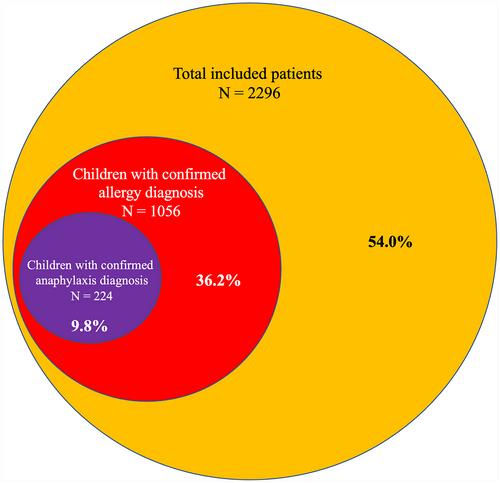Anaphylaxis management in a French pediatric emergency department: Lessons from the ANA-PED study
Abstract
Background
Anaphylaxis is a serious systemic hypersensitivity reaction that requires immediate recognition and prompt administration of epinephrine/adrenaline. The present study aimed to assess the appropriateness of epinephrine/adrenaline use in children identified as allergic by physicians in the emergency department (ED) at the time of the reaction, and to identify factors that are possibly associated with epinephrine/adrenaline administration, auto-injector prescription, and further referral to an allergist.
Methods
We performed a retrospective cross-sectional study at the pediatric ED of the University Hospital of Montpellier, France. We included all consecutive children who attended the ED between 2016 and 2020 with an allergy-related diagnosis at discharge.
Results
We included 1056 allergy-related visits, including 224 (21.2%) with a diagnosis of anaphylaxis at discharge; only 17.0% of them received an epinephrine/adrenaline injection, and 57.1% consulted an allergist after the acute episode. An auto-injector was prescribed to 63 (28.1%) patients at discharge from the ED. Besides the severity of the clinical presentation, factors associated with a guidelines-based management of the anaphylactic reaction and with an increased administration rate of epinephrine/adrenaline included presence of asthma symptoms and presence of extended skin reactions.
Conclusions
Our study underlines persistent gaps in the management of pediatric anaphylaxis in ED, focusing on hereby identified levers. By disseminating current knowledge and guidelines on anaphylaxis and allergies, specialists could work together with emergency physicians to establish effective management algorithms and improve anaphylaxis management and care pathways for children experiencing allergic reactions, especially anaphylaxis.
Trail Registration
Clinical Trials, number NCT05112367.


| 公司名称 | 产品信息 | 采购帮参考价格 |
|---|
 求助内容:
求助内容: 应助结果提醒方式:
应助结果提醒方式:


